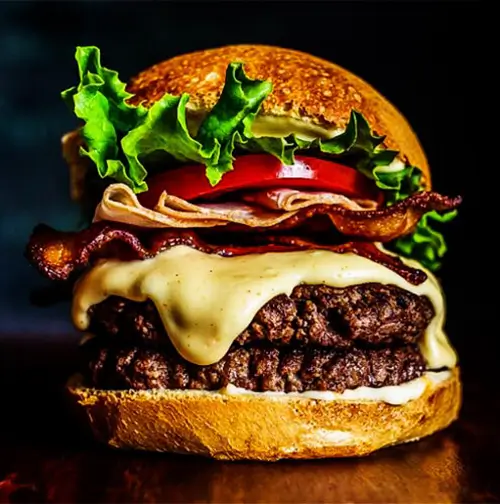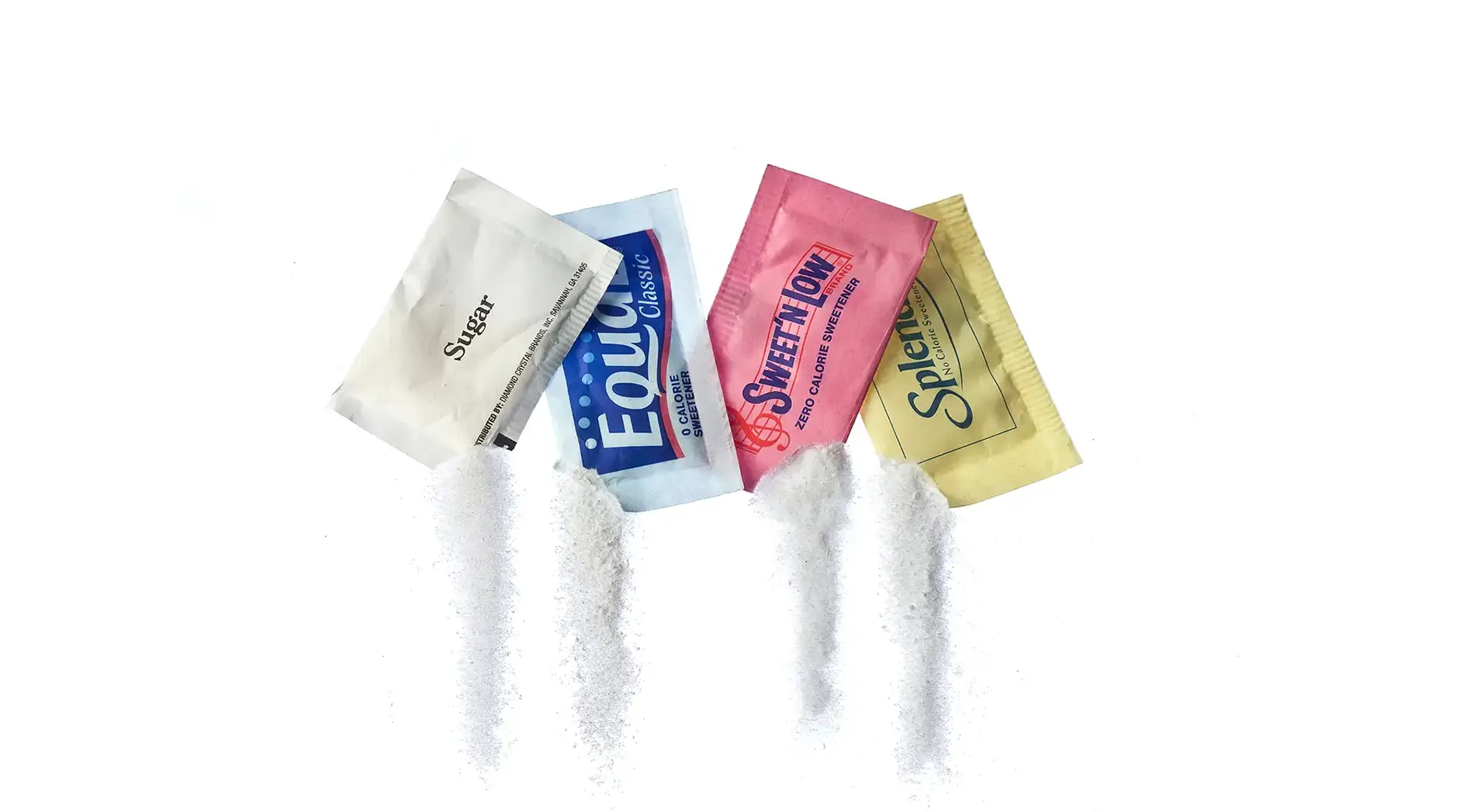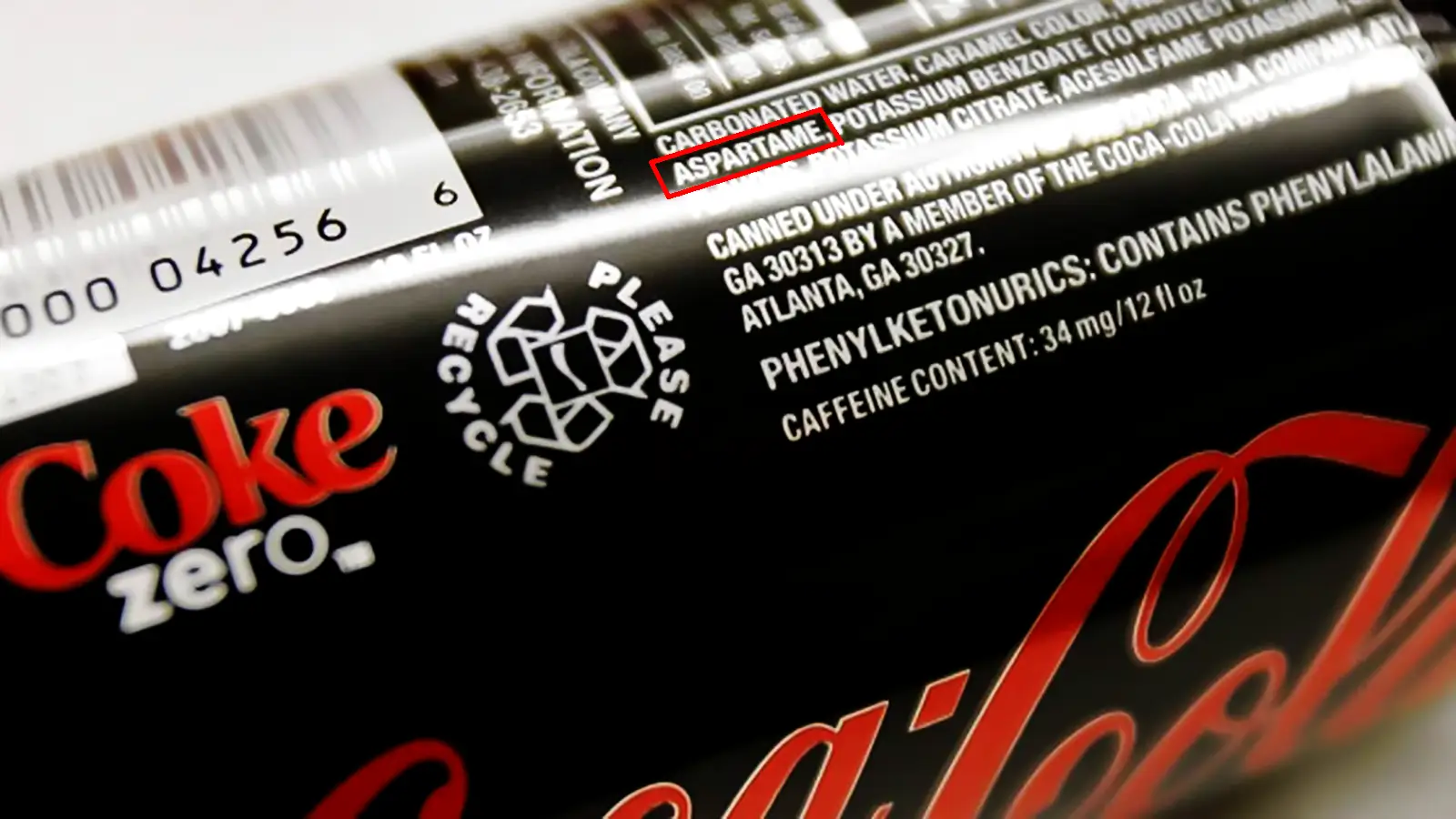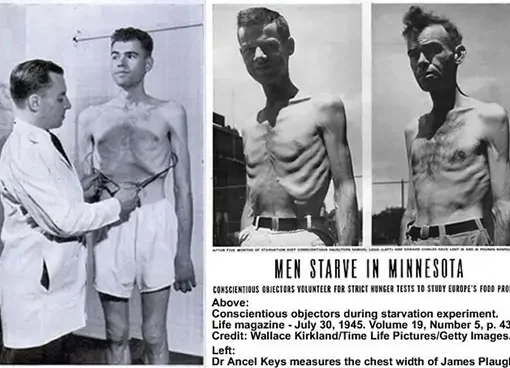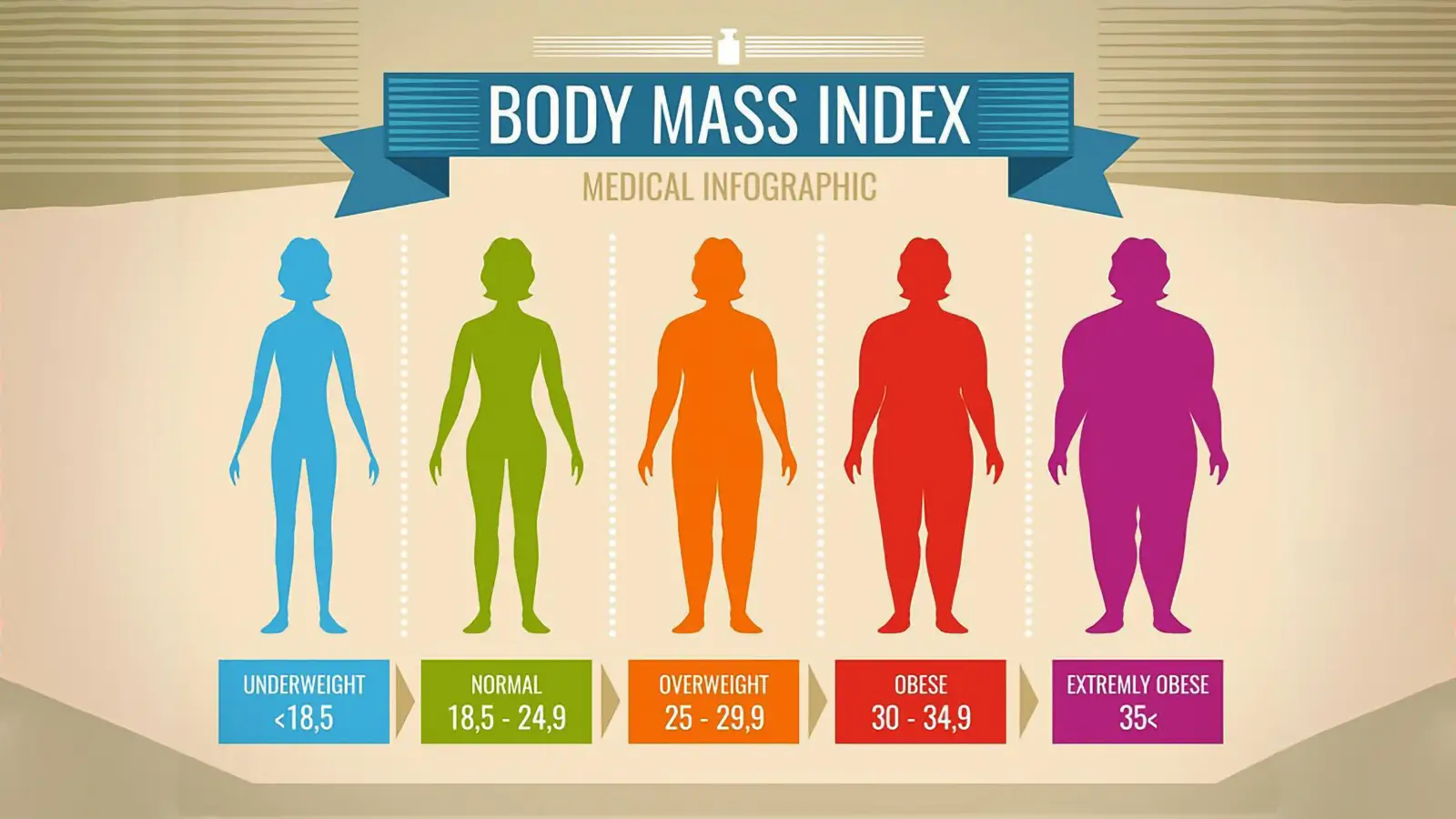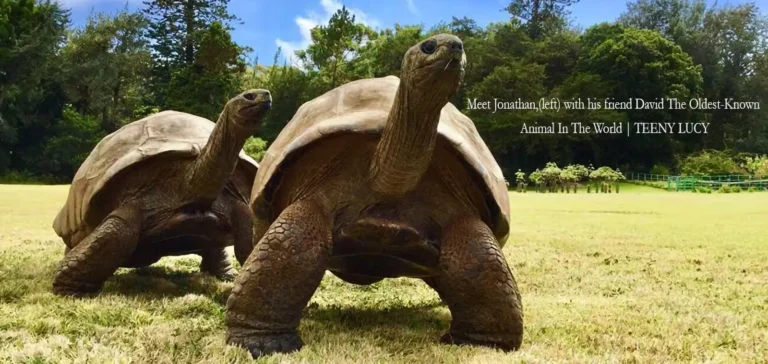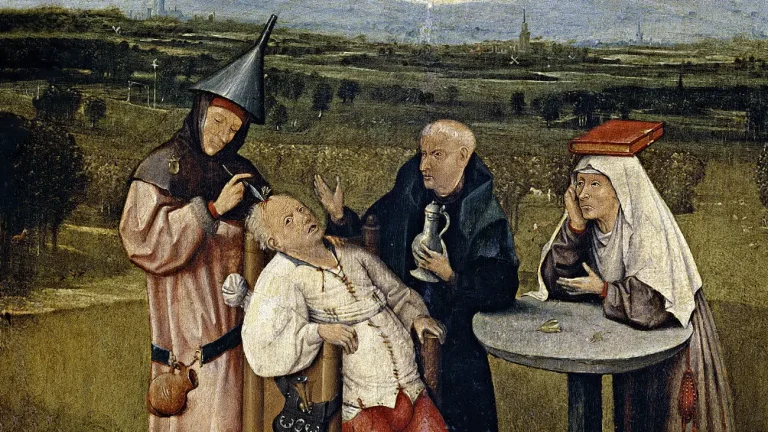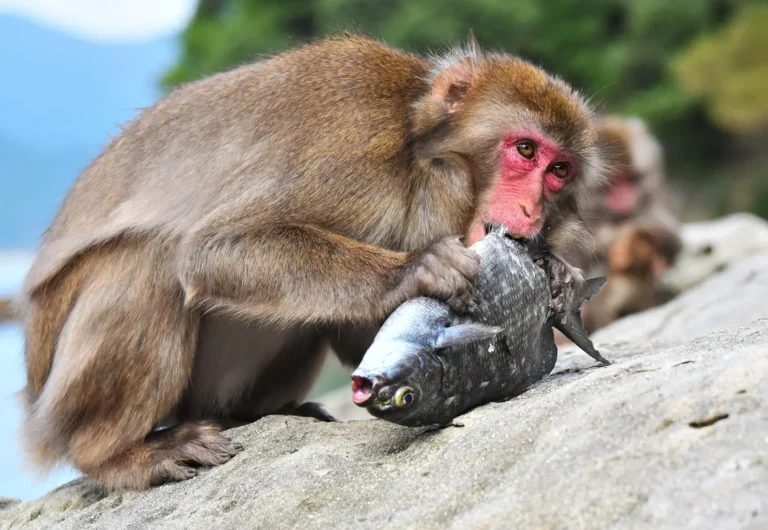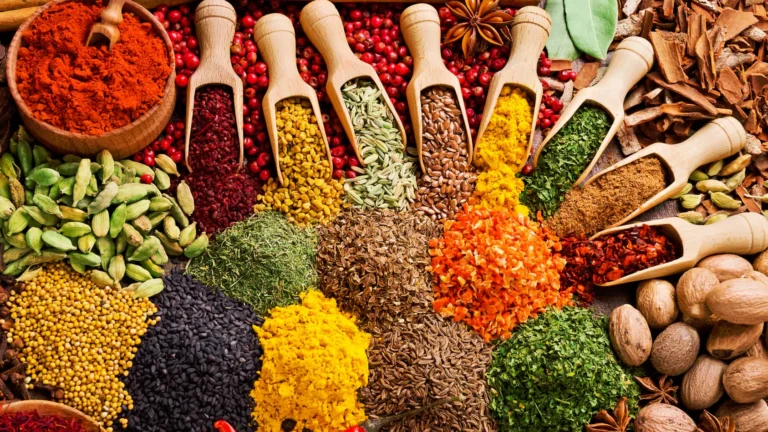Cause of Obesity- Maladaptation or addiction
What is the cause of obesity epidemic? For all life on Earth, food is not a choice. The hardest thing for the animal in the wilderness is to gain weight.
Milos Pokimica
Written By: Milos Pokimica
Medically Reviewed by: Dr. Xiùying Wáng, M.D.
Updated June 9, 2023What is the cause of obesity epidemic? Can the obesity epidemic be reversed if we understand the cause of obesity?
Obesity is a complex disease and it is a disease characterized by an excess of body fat. Obesity is more than just a cosmetic issue. It is a medical condition that raises the risk of developing other diseases and health issues, such as heart disease, diabetes, high blood pressure, and certain cancers.
Some people struggle to lose weight for a variety of reasons but the main one is that our brain acts in an evolutionary protective manner. In other words, the cause of obesity is maladaptation to our current environment. Scarcity is the rule in nature and an overabundance of food never existed in our 50 million-long history.
When you go to the obesity clinic and ask what is the cause of obesity, and what you have to change in your life, you won’t receive a decisive answer. The reason is that conventional allopathic medicine works as a reductionist practice. The cause of obesity is maladaptation which is a decisive answer. But this answer requires a holistic approach and a reductionist approach is what you get in hospitals. Holistic medicine does not have a patent or operation pending so there is no profit to pay for someone’s engagements. That is a reason why they don’t tell you the whole truth about the cause of obesity epidemic. Prescription medications and weight-loss procedures are additional options for treating obesity that make a lot of money besides supplements and other programs but all of them remember of they do not treat the root cause of the obesity epidemic. You can lose weight bat the condition that made you gain weight is still there as an evolutionary protective mechanism and it is very little we can do about it.
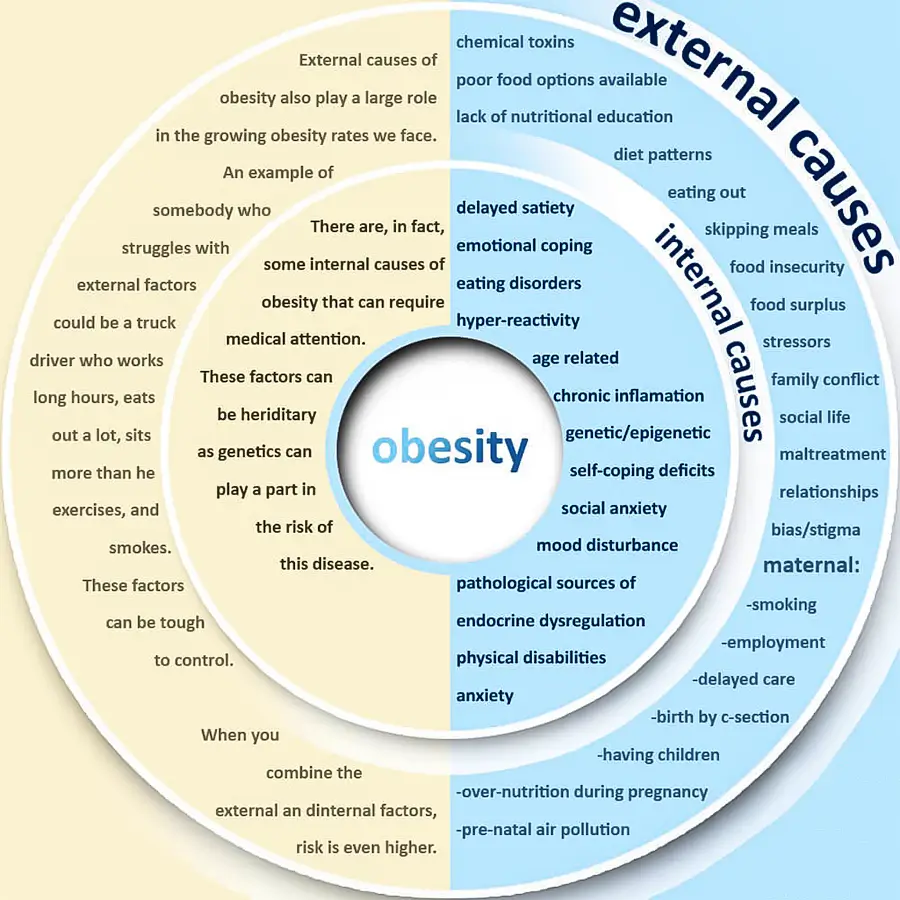
The cause of obesity is embedded into our genome and it is embedded into the genome of every species on this planet. All of the species on Earth are going to become obese if there is an abundance of food not just our pets. Animals as well as humans eat as much as they can every time they can. We can start to explain the cause of obesity in a scientific manner. We can start to look into genomes a do a line of studies, we can start to experiment with different hormones, and different food types, then we can do a line of studies involving neurochemicals and brain signaling. In this way, maybe studies will be able to give us some magic injection or pill to deal with this condition but the cause of obesity remains a complex mechanism rooted in maladaptation.
The majority of people think about weight loss because of the sex appeal. Health considerations are not always the primary reason for dieting. However, in cases of morbid obesity when the doctor tells patients to lose weight or die, health considerations come into play patients will try to lose weight. Most of the entire population will in their lifetimes at some point be on a diet for one reason or the other. In most cases, dieting would not give any long-term and lasting results.
But why? What is the cause of obesity? Let’s look into it in more detail.
An evolutionary adaptation is any heritable phenotypic character whose frequency of appearance in a population is the result of increased reproductive success. Adaptation is the development that the organism goes through in order to become accustomed to an environment. It is linked to evolution because it is a long process. One that occurs over many generations. Genetic change is what occurs.
Habitats do often change. Consequently, the process of adaptation is never finally complete. With time, it may result that the habitat changes to some extent and that species adapt to fit its surroundings better and better.
It may also happen that the environment changes very little and that species do not need to adapt at all. Examples of this can be seen in so-called living fossils like jellyfish that evolved 550 million years ago. Also, variations in the habitat may happen almost immediately, resulting in species growing less and less well-adapted and eventually going extinct.
What does evolutionary adaptation have to do with our diet and why is this important?
We have to understand how abrupt shifts in our environment caused by technological progress and our modern way of living can affect our biology that is not adapted to it and how it might affect our health. Another solution would be to act impulsively, emotionally, and instinctively like most other animals. That is precisely what we can see when we visit hospitals and give most of our income on the good service of modern medicine.
Animals eat impulsively because they are conditioned to do it for survival. For all life on the planet Earth, food is not a choice. The hardest thing for an animal in the wilderness is to gain weight. The hardest thing for us is to lose it.
And this is only because of technological progress in the last couple of centuries. That progress has enabled our current generation to eat as much as we want and whenever we want. We have a shift in our understanding of food and we have started to treat food as a source of gratification. The problem is that If we do start to treat food as a source of gratification and make dietary choices that are based on feelings and satisfaction, like it or not it will have health consequences.
For most of our evolution, we were slim in a state of constant hunger and constant physical activity, naked, and eating mostly vegan food.
The only reasonable assumption is that hominins eat like any other animal. This means only in situations when they did find food. This was the case for all of our ancestor species and that means the time period of 50 million years. Hunger like exercise is something that our physiology is adapted to and expects it. We will not die if we don’t eat. Homo erectus did not have a fridge to go to in the middle of the night when he felt like eating. Hunger is a normal feeling for every animal. This includes humans as well. The feeling is so strong that has the ability to condition our behavior and override any other instinct. It has to be so that it would be able to force the animal to search for it or it will die. On the other side, a feeling of constant fullness is not natural.
Even when we are on a restrictive diet modern people will like to have a feeling of fullness. So here comes caffeine, hunger suppressors of different kinds, and so on. If we can just find a magical, all-you-can-eat, weight-loss diet. Evolutional conditioning is so strong that in many cases after dieting people can develop a fear of starvation and will be in a constant struggle not to overeat even if they are not hungry. We are surrounded by food everywhere and plus on top of that, we can eat sugar and fat in an isolated refined form that we were never able to find in nature giving ourselves something known as supernormal stimuli or in other words, food dopamine high.
On one side, there is starvation and on another unnatural release of dopamine triggered by unnatural food that we have never been exposed to in our evolution. This is what causes a binge eating disorder and obesity, 50 million years of scarcity, and starvation.
Where is the malfunction? The cause of obesity dilemma and epidemic remained shrouded in complexity and mystery. There was a range of clinical trials that have somewhat confirmed this and this is my personal opinion also that obesity conditions are `maladaptations’ of actual current modern lifestyle to our genome (Fernandez-Real & Ricart 1999). In other words, maladaptation is something that occurs in an abrupt shift of habitat that physiology is not adapted to cope with.
In the case of obesity, the standard regulatory system will tell the brain that we have fat deposits stored for an extended period and that we can endure little hunger. However, hominins could never become fat due to scarcity, so they never developed an adaptation to the abundance of food. Our mind still thinks that if we do not eat all that we can we will starve to death in the upcoming drought.
Even our concept of beauty changed. I do not mean what we were thinking is pretty in ancient Egypt or Persia. That is a form of modern agricultural civilization with societal structures. Before civilization and agriculture in the Paleo period and beyond, hunter-gathers idealized morbid obesity. We can see a physical example of this in morbid obesity Venus figurines that were found in different locations from the Paleo period.
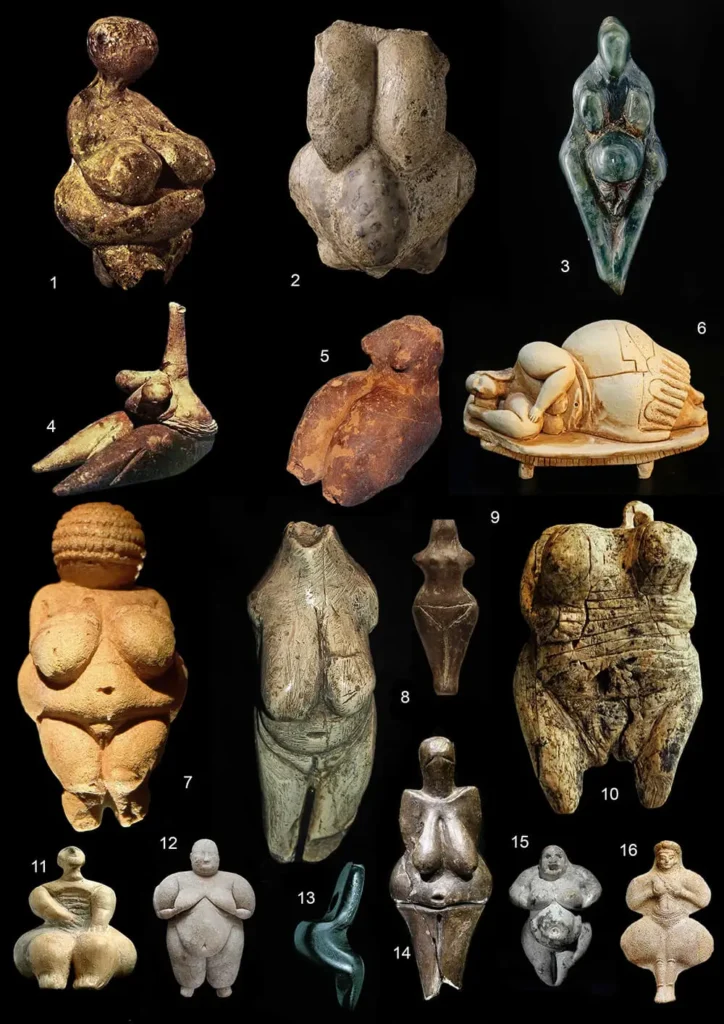
Because there was never an abundance of food and for their entire life during the Paleo period and before and for our entire evolution there was scarcity, the concept of morbid obesity was nothing more than idolized fiction. A fairytale of life without starvation. We have to understand the difference between foraging and hunter-gathering and agriculture, and then agricultural societies and our modern industrial ones are significant. They are enormous regarding evolutional biology. It was all about survival.
The skinny, malnourished female was in danger if became pregnant. Living in nature might seem romantic today but for our ancestors, it was a constant nightmare with an average lifespan of 25 years. In Ice Age in Europe during winter (the last glacial period from 110,000 – 11,700 years ago), a malnourished pregnant woman would have many problems. Morbid obesity is a symbol of fertility or a symbol of successful pregnancy and a symbol of life itself. Our paleo grandparents did not understand the full range of functioning of biological principles, but they for sure understand the role of adipose tissue for survival. It was the way of life ever since our ancestors moved out of Africa and entered colder climates, and even in Africa actually, there was no overabundance of sources of food around also. In snow and ice and caves with constant hunger and other hominins around competing for food, it was the worst-case scenario. That is why we can see morbid obesity Venuses figurines.
After the Neolithic Revolution, it all shifted rapidly. There were the first larger cities and societal hierarchies. Also, the concept of fertility shifted everywhere. Goddesses became slimmer, stories grew into religion, and morphed into the culture.
Eating healthy still does not mean that we will override our hunger drive. There is no magic cure for survival signaling except for strong medications. Eating healthy can still make us obese. The healthy diet is just the one we had evolved and adapted to eating. That is it. It is not a restrictive diet.
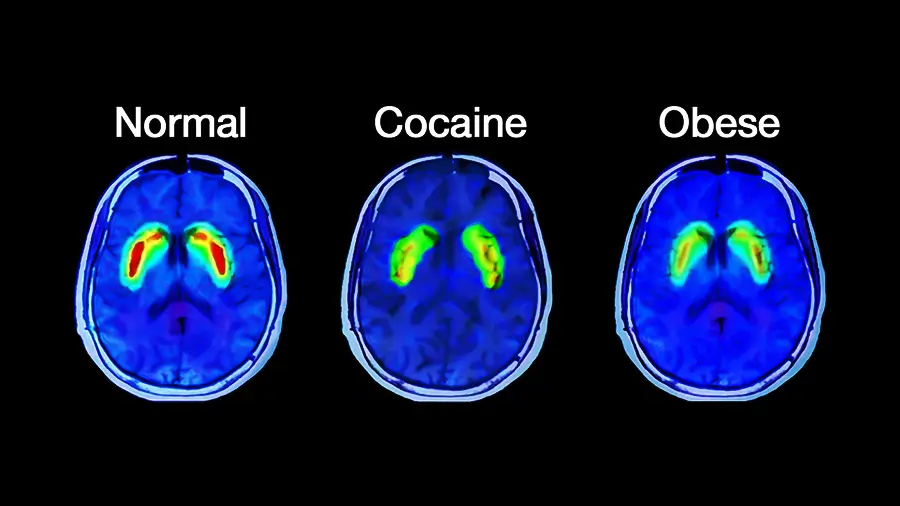
It is not the tastiest diet also. In nature, there is scarcity, so taste exists as a reward, not as a common theme for every meal.
For every animal in existence in nature, hunger is the normal state of being. Alternatively, a constant struggle for food would be more precise. For every animal that lives on this planet, food obsession is a daytime job. Most of the time during their lives animals spend searching for food. There are no supermarkets and cans of ready-to-eat meals. It is a struggle. Moreover, that was a normal condition for humans even today. Well, at least the body physiology part.
Our desire and pleasure-seeking behavior are what make us sick. Evolution did not predict electricity and microchips and cars. We are maladapted to our habitat. We have underlined mechanisms that force us to act in an evolutionary protective manner such as overeating food. The not-so-unique obstacle now is that there is no scarcity anymore.
References:
Passages selected from a book: Pokimica, Milos. Go Vegan? Review of Science Part 1. Kindle ed., Amazon, 2018.
- Anderberg, Rozita H et al. “The Stomach-Derived Hormone Ghrelin Increases Impulsive Behavior.” Neuropsychopharmacology : official publication of the American College of Neuropsychopharmacology vol. 41,5 (2016): 1199-209. doi:10.1038/npp.2015.297
- Al Massadi, Omar et al. “Ghrelin and food reward.” Neuropharmacology vol. 148 (2019): 131-138. doi:10.1016/j.neuropharm.2019.01.001
- Johnson, Paul M, and Paul J Kenny. “Dopamine D2 receptors in addiction-like reward dysfunction and compulsive eating in obese rats.” Nature neuroscience vol. 13,5 (2010): 635-41. doi:10.1038/nn.2519
- Palmiter, Richard D. “Is dopamine a physiologically relevant mediator of feeding behavior?.” Trends in neurosciences vol. 30,8 (2007): 375-81. doi:10.1016/j.tins.2007.06.004
- Obradovic, Milan et al. “Leptin and Obesity: Role and Clinical Implication.” Frontiers in endocrinology vol. 12 585887. 18 May. 2021, doi:10.3389/fendo.2021.585887
- Crujeiras, Ana B et al. “Leptin resistance in obesity: An epigenetic landscape.” Life sciences vol. 140 (2015): 57-63. doi:10.1016/j.lfs.2015.05.003
- Peng, Jin et al. “Central and peripheral leptin resistance in obesity and improvements of exercise.” Hormones and behavior vol. 133 (2021): 105006. doi:10.1016/j.yhbeh.2021.105006
Related Posts
Do you have any questions about nutrition and health?
I would love to hear from you and answer them in my next post. I appreciate your input and opinion and I look forward to hearing from you soon. I also invite you to follow us on Facebook, Instagram, and Pinterest for more diet, nutrition, and health content. You can leave a comment there and connect with other health enthusiasts, share your tips and experiences, and get support and encouragement from our team and community.
I hope that this post was informative and enjoyable for you and that you are prepared to apply the insights you learned. If you found this post helpful, please share it with your friends and family who might also benefit from it. You never know who might need some guidance and support on their health journey.
– You Might Also Like –

Learn About Nutrition
Milos Pokimica is a doctor of natural medicine, clinical nutritionist, medical health and nutrition writer, and nutritional science advisor. Author of the book series Go Vegan? Review of Science, he also operates the natural health website GoVeganWay.com
Medical Disclaimer
GoVeganWay.com brings you reviews of the latest nutrition and health-related research. The information provided represents the personal opinion of the author and is not intended nor implied to be a substitute for professional medical advice, diagnosis, or treatment. The information provided is for informational purposes only and is not intended to serve as a substitute for the consultation, diagnosis, and/or medical treatment of a qualified physician or healthcare provider.NEVER DISREGARD PROFESSIONAL MEDICAL ADVICE OR DELAY SEEKING MEDICAL TREATMENT BECAUSE OF SOMETHING YOU HAVE READ ON OR ACCESSED THROUGH GoVeganWay.com
NEVER APPLY ANY LIFESTYLE CHANGES OR ANY CHANGES AT ALL AS A CONSEQUENCE OF SOMETHING YOU HAVE READ IN GoVeganWay.com BEFORE CONSULTING LICENCED MEDICAL PRACTITIONER.
In the event of a medical emergency, call a doctor or 911 immediately. GoVeganWay.com does not recommend or endorse any specific groups, organizations, tests, physicians, products, procedures, opinions, or other information that may be mentioned inside.
Editor Picks –
Milos Pokimica is a health and nutrition writer and nutritional science advisor. Author of the book series Go Vegan? Review of Science, he also operates the natural health website GoVeganWay.com
Latest Articles –
Top Health News — ScienceDaily
- Why consciousness exists at allon December 15, 2025
Consciousness evolved in stages, starting with basic survival responses like pain and alarm, then expanding into focused awareness and self-reflection. These layers help organisms avoid danger, learn from the environment, and coordinate socially. Surprisingly, birds show many of these same traits, from subjective perception to basic self-awareness. This suggests consciousness is far older and more widespread than once believed.
- AI found a way to stop a virus before it enters cellson December 15, 2025
Researchers discovered a hidden molecular “switch” that herpes viruses rely on to invade cells. By combining AI, simulations, and lab experiments, they identified and altered a single amino acid that shut down viral entry. What once might have taken years was achieved far faster using computational tools. The findings open new possibilities for designing future antiviral treatments.
- New study shows some plant-based diets may raise heart disease riskon December 15, 2025
Researchers tracking over 63,000 adults found that high-quality, minimally processed plant foods significantly reduce cardiovascular risk. But when those plant foods are ultra-processed, the advantage disappears—and can even backfire. Some ultra-processed plant diets increased risk by 40%. The study urges a shift toward whole, naturally nutrient-rich plant foods.
- These simple habits could make your brain 8 years younger, study findson December 15, 2025
New research shows that your brain’s “true age” can shift dramatically depending on how you live, with optimism, restorative sleep, stress management, and strong social support acting like powerful anti-aging tools. Using advanced MRI-based brain-age estimates, scientists found that people with multiple healthy lifestyle factors had brains up to eight years younger than expected — even among those living with chronic pain.
- Anxiety and insomnia linked to sharp drops in key immune cellson December 15, 2025
Natural killer cells act as the immune system’s rapid-response team, but the stress of anxiety and insomnia may be quietly thinning their ranks. A study of young women in Saudi Arabia found that both conditions were linked to significantly fewer NK cells—especially the circulating types responsible for destroying infected or abnormal cells. As anxiety severity increased, NK cell levels dropped even further, suggesting a stress-driven weakening of immune defenses.
- Cannabis compounds show unexpected power against ovarian canceron December 15, 2025
Scientists have discovered that key compounds from cannabis—CBD and THC—show surprisingly strong effects against ovarian cancer cells. Used together, they slow cell growth, reduce colony formation, and may even block the cancer’s ability to spread. Even more promising, the treatment caused minimal harm to healthy cells and appears to work by restoring a disrupted signaling pathway that fuels tumor growth.
- Mayo Clinic neurosurgeon reveals 8 back pain myths to stop believingon December 15, 2025
Back pain is wrapped in persistent myths, but many are far from the truth. From misconceptions about heavy lifting and bed rest to confusion over posture, exercise, and surgery, Dr. Meghan Murphy breaks down what really causes pain and what actually helps. Her insights reveal that everyday habits, movement, and smart prevention often make a bigger difference than people realize.
PubMed, #vegan-diet –
- Healthful and Unhealthful Plant-Based Diets and Their Association with Cardiometabolic Targets in Women Diagnosed with Breast Cancer: A Cross-Sectional Analysis of a Lifestyle Trialon December 11, 2025
CONCLUSIONS: Maintaining cardiometabolic risk factors within normal ranges is clinically relevant in BCS, and this may be more likely when a plant-based diet is consumed, especially if low in unhealthy plant foods.
- Dietary and Lifestyle Patterns and Their Associations with Cardiovascular and Inflammatory Biomarkers in Vegans, Vegetarians, Pescatarians, and Omnivores: A Cross-Sectional Studyon December 11, 2025
Background: Plant-based diets are associated with reduced cardiometabolic risk, yet the influence of lifestyle behaviors on these benefits remains insufficiently understood. Objective: To assess the combined impact of dietary patterns and lifestyle behaviors on body composition, lipid profiles, and inflammatory biomarkers in healthy young adults. Methods: In this cross-sectional study, 155 participants aged 18-39 years were categorized into four dietary groups: vegans (n = 48), vegetarians (n […]
- Functional and Nutritional Properties of Lion’s Mane Mushrooms in Oat-Based Desserts for Dysphagia and Healthy Ageingon December 11, 2025
Hericium erinaceus (Lion’s Mane mushroom) is a medicinal species recognised for its neuroprotective and antioxidant properties. This study investigated its potential as a functional ingredient in oat milk-based desserts formulated for individuals with dysphagia. Freeze-dried Lion’s Mane powder (LMP), containing high-quality protein (~16%, amino acid score 88%), dietary fibre (~31%), and phenolic compounds (72.15 mg GAE/g), was incorporated at varying levels using gelatin or iota-carrageenan […]
- “A football team with no midfield”: A qualitative analysis of anti-vegan stigma in Italyon December 7, 2025
A growing body of research has demonstrated the prevalence of unfavourable attitudes towards individuals who adhere to a vegan diet and has provided empirical evidence to support the existence of an anti-vegan ideology. The present study aims to contribute to extant knowledge by examining the social perception of veganism and vegans in Italy. Italy is a nation characterised by a traditional culture of food that serves as a significant catalyst for collective identification and national pride….
- Plant-based dietary index on the Mediterranean and a vegan diet: a secondary analysis of a randomized, cross-over trialon December 5, 2025
CONCLUSION: These findings suggest that, replacing animal products even with the “unhealthful” plant-based foods on a vegan diet was associated with weight loss.
Random Posts –
Featured Posts –
Latest from PubMed, #plant-based diet –
- Identification of effective plant-based oils for use in aquafeed: An evaluation of impact on gamete quality and developmental success using zebrafish (Danio rerio) as a screening organismby Seyed-Mohammadreza Samaee on December 14, 2025
To evaluate the effectiveness of zebrafish as a screening system for identifying appropriate plant oils (POs) for aquafeed, Artemia nauplii (AN) were enriched with three single- cultivar olive oils (OO): Koroneiki, Parseh, and Arghavan. The resulting AN (ANKor, ANPar, ANArg, and AN36 [36 h starved AN, control]) were then fed to 360 fish (3.5 cm) for one month. The fatty acid (FA) profile of the AN was reflected in the ova and influenced both sperm motility and density, which in turn affected […]
- The Effect of Dietary Interventions on Human Vascular Function in the Context of Acute Psychological Stress: A Scoping Reviewby Rosalind Baynham on December 14, 2025
Episodes of acute psychological stress increase the risk for cardiovascular diseases, partially through stress-induced impairments in vascular function. During psychologically stressful periods, individuals are more likely to consume unhealthy foods and fewer fruits and vegetables. Yet, the impact of dietary choices and their nutritional composition on vascular function in the context of psychological stress is unclear. In this scoping review, comprehensive database searches were carried out […]
- Plant-based diets, gut microbiota, blood metabolome, and risk of colorectal, liver and pancreatic cancers: results from a large prospective cohort study of predominantly low-income Americansby Fangcheng Yuan on December 14, 2025
CONCLUSIONS: A diet high in healthy plant foods and low in animal foods was inversely associated with liver cancer risk and with CRC risk among screening-naïve participants. These associations may be partly mediated through gut microbiota and systemic metabolism.
- Vegetarian diet and likelihood of becoming centenarians in Chinese adults aged 80 years or older: a nested case-control studyby Yaqi Li on December 14, 2025
CONCLUSIONS: Targeting individuals of advanced age (80+ years) in China, we found that individuals following vegetarian diet had lower likelihood of becoming centenarians relative to omnivores, underscoring the importance of a balanced high-quality diet with animal- and plant-derived food composition for exceptional longevity, especially in the underweight oldest-old.
- Priority of nutrition and exercise in depression management: triangulating mini-review of past and recent evidence with clinical practice guidelinesby Shannon Rogers on December 14, 2025
CONCLUSIONS: Disparities that exist in leading depression management guidelines vis-à-vis inclusion of evidence-informed nutrition and PA/PE recommendations, warrant reconciliation. Evidence supporting anti-depressant WFPB nutrition and limiting pro-inflammatory animal-sourced food and UPF and supporting anti-inflammatory aerobic exercise and resistance training warrants being translated into national/international depression management guidelines as consistently as recommendations for…
- The effect of a diet based on vegetable and dairy protein on biochemical and functional indicators of sarcopenia in patients with liver cirrhosis: a randomized controlled trialby Mahdiyeh Taghizadeh on December 13, 2025
CONCLUSIONS: In conclusion, a vegetable and dairy protein-based diet effectively inhibited significant elevations in ammonia levels compared to the standard diet in persons with liver cirrhosis; however, anthropometric parameters and muscle function did not differ between two groups.

